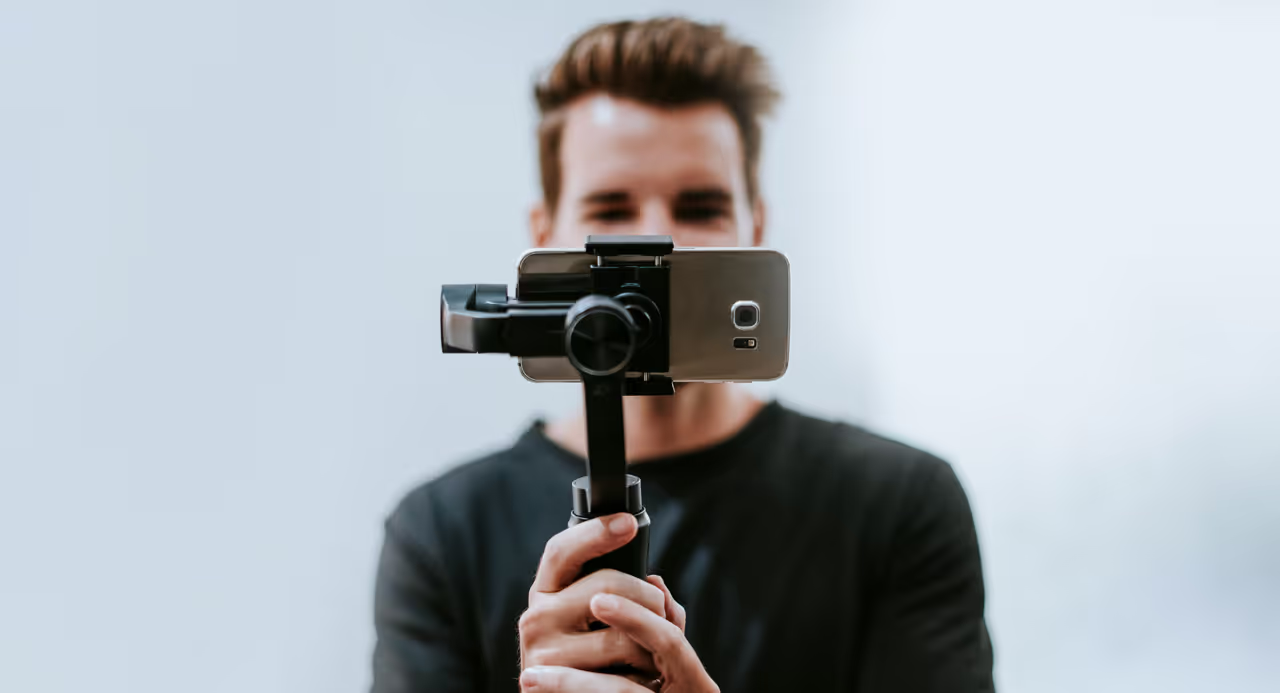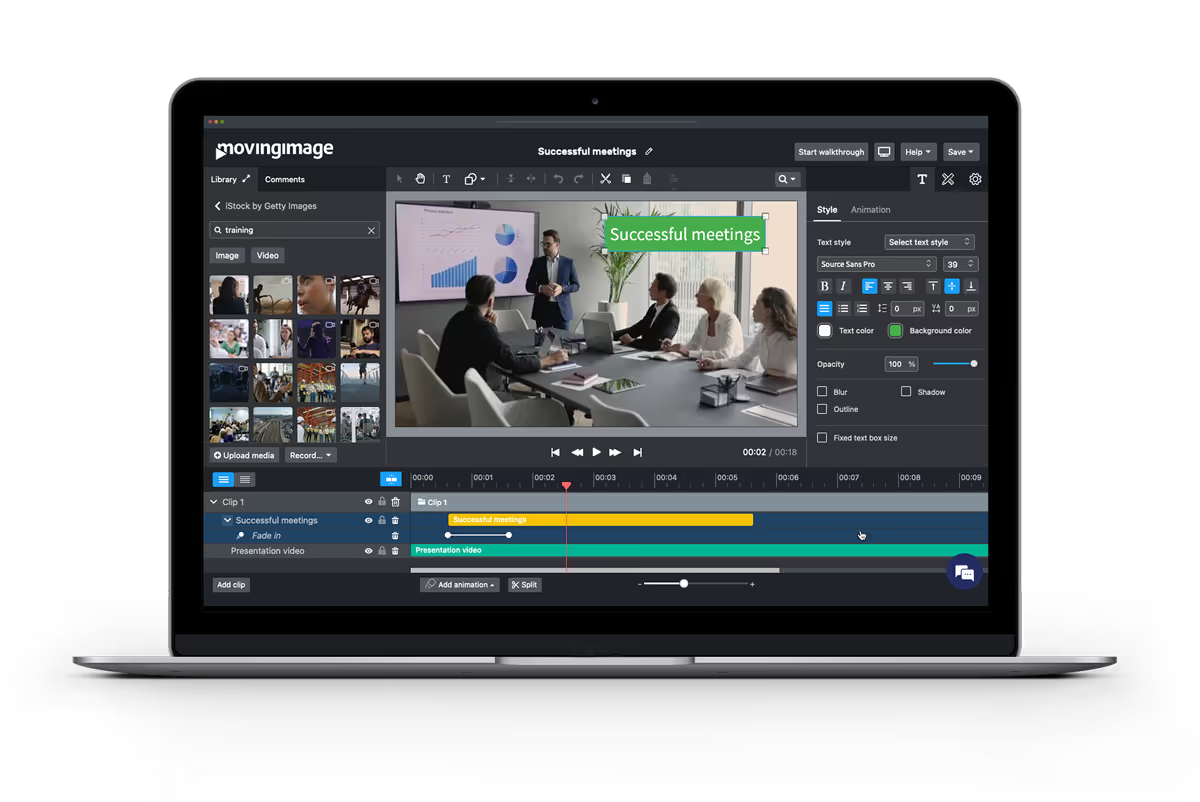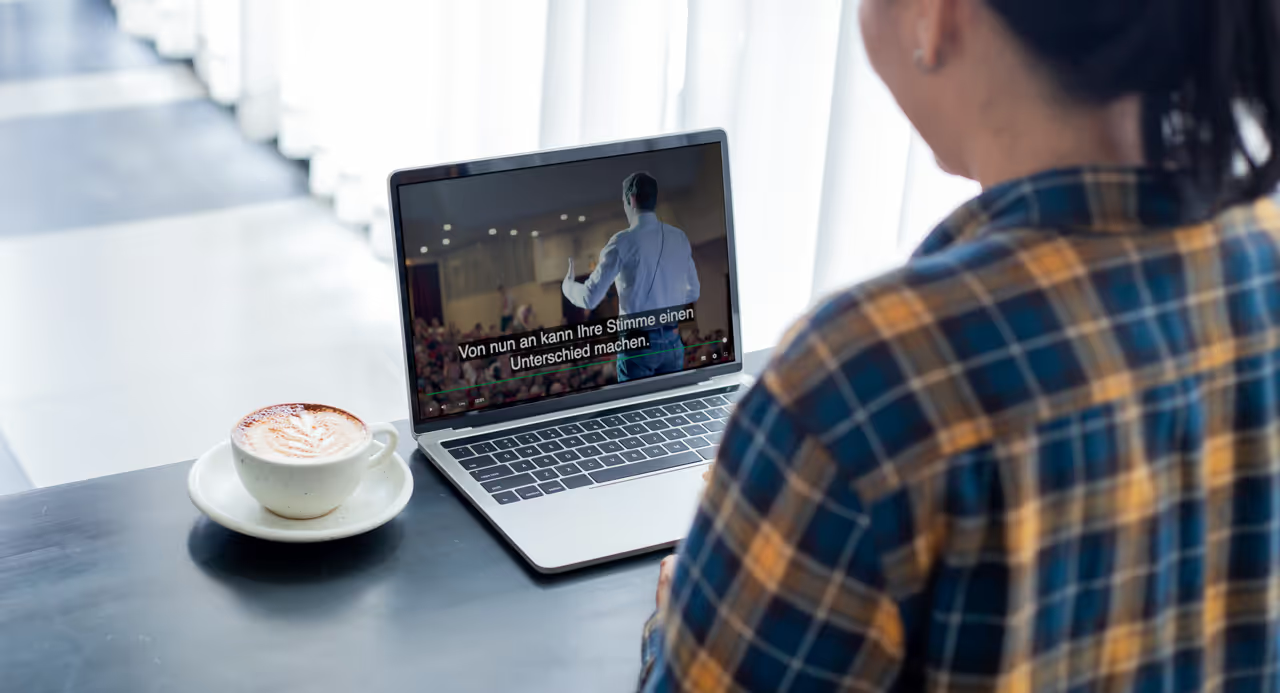Tips & tricks: Making corporate videos with your cell phone

Get Access to Expert Insights

Tips & tricks: Making corporate videos with your cell phone
But first of all, be clear: what do you actually want to film?

Think in advance about what exactly you want to film. This will determine the conceptual and technical effort required. It makes a big difference whether you have to produce a statement video, for example – in a classic, i.e. static talking head frame. Or whether you want to film your trade fair appearance, where you try to translate the lively atmosphere using moving shots and a high editing speed. You don’t necessarily have to take light with you for such a trade fair clip. Keep your technical equipment to a minimum and get involved in spontaneous moments – even if the camera starts to shake uncontrollably during your “subject hunt”. With statement videos, on the other hand, you can and should take more time to set up the image. Decide on a section with depth and not too much detail in the background, as this could otherwise distract from your statement makers in the foreground. And light him or her a little, at least with a frontal, slightly diffuse light.
Five tips for shooting videos with your smartphone
- Create a shot list in advance of the actual shoot, on which you describe the motifs that should be seen in the video in bullet points. You can read what this can look like in conjunction with a concept for a multi-minute image video.
- When preparing videos in which statement makers appear, determine what answers they should give. Then write the appropriate questions to ask during the interviews. This will make the statements seem much more authentic than if you put them in the mouth of your interviewer. But also be open to statements that deviate from your ideal ideas. Sometimes this can lead to exciting new topics during the interview. But don’t get bogged down and always come back to your actual list of questions.
- Find the right music before you start filming and editing. There are many easy-to-find portals with GEMA-free music on the Internet. Finding tracks is fun – they allow the film to emerge in your head and drive the realization of the actual video forward!
- You don’t know which motifs should actually be in your movie? Don’t worry! Get some inspiration online. There are numerous how-to channels on YouTube that talk in more detail about illustration, storytelling and realization options than this newsletter can do due to its brevity
- Familiarize yourself with the technology! Of course, everyone has recorded something with their cell phone. But try it out and see if you can make your shots even more stable than usual with both hands and your upper arms slightly pressed against your body. And also go through the additional gadgets that we present to you below. This will make the shoot all the more relaxed. And the more time and peace of mind you’ll have for the important things like content and motifs.
This equipment will help you to make even better employer videos:
External microphones

An old production saying goes: the sound is more important than the picture! So don’t record your statements with your internal cell phone microphone, as it is usually positioned too far away from the interviewee and therefore picks up too much background noise. Small clip-on microphones that can be connected to the cell phone via Bluetooth, for example, can help. They are usually available in a handy set, including a windscreen, and many have integrated noise canceling. Our additional tip: For videos dominated by original sound, it may be better to use microphones with transformation cables, as the speech sound is then usually captured with even less interference (less crackling, less hissing).
Mobile light

You don’t need high-class lighting equipment with large light surfaces and heavy tripods for your mobile video. And you don’t necessarily need to know about three-point lighting. But a light source that illuminates a specific subject or face from the front and makes it stand out from its surroundings will enhance your shots immensely. This can be a ring light or a compact LED box, which can usually also be clamped to cell phone tripods – and are therefore also suitable for moving shots. Of course, you can also work with natural light: The outside corridors in trade fair buildings, for example, where a lot of daylight often penetrates through the glass walls, are well suited as interview settings. But be careful: choose the right time for your interview and don’t keep it too long – differences in light and color in the picture caused by the blue hour or setting sun could irritate the viewers of your video.
Gimbal

Sticks or gimbals, to which you attach your cell phone, provide the necessary stability and smooth movements for your shots. Although controlling a gimbal requires a little practice, the output is impressive: A camera that appears to hover, at least in some takes, raises the quality of your videos even further and can make for cinematic moments. And if you’ve caught fire while shooting with this kind of equipment, you could also think about buying a drone. These are also becoming more and more affordable, and perhaps a drone license can be financed with the help of the employer’s development budget?
Video editing software

Once you have shot your content, you will want to have an easy-to-handle and smart tool to cut edit your videos, insert a standard intro and outro with your company logo, lower thirds or other textual parts and so on. There are many professional software out there, but most of them have the disadvantage that they require a certain level of expertise that not everyone will have. In the last years, many alternatives to this arised, ensuring easy, fast and fully customizable results. VideoCreator Pro is a software of this kind, and is designed for the needs of modern enterprises, ensuring full control on branding with templates and customizable media gallery, and at the same time the freedom to collaborate on video projects within the organization.
Are you looking for some further inspiration?
At movingimage we also have a dedicated team that takes care of our internal video production as well as external larger projects for our customers. In fact, not not every internal production requires a team of several people, lots of equipment and preparation. Sometimes a single video producer who can shoot quickly and on location is enough.
We have gathered some examples for you to have a look on how such videos could look like:
DMEXCO to highlight video
Recruiting video for a Solution Engineer
Our Speakers
But first of all, be clear: what do you actually want to film?

Think in advance about what exactly you want to film. This will determine the conceptual and technical effort required. It makes a big difference whether you have to produce a statement video, for example – in a classic, i.e. static talking head frame. Or whether you want to film your trade fair appearance, where you try to translate the lively atmosphere using moving shots and a high editing speed. You don’t necessarily have to take light with you for such a trade fair clip. Keep your technical equipment to a minimum and get involved in spontaneous moments – even if the camera starts to shake uncontrollably during your “subject hunt”. With statement videos, on the other hand, you can and should take more time to set up the image. Decide on a section with depth and not too much detail in the background, as this could otherwise distract from your statement makers in the foreground. And light him or her a little, at least with a frontal, slightly diffuse light.
Five tips for shooting videos with your smartphone
- Create a shot list in advance of the actual shoot, on which you describe the motifs that should be seen in the video in bullet points. You can read what this can look like in conjunction with a concept for a multi-minute image video.
- When preparing videos in which statement makers appear, determine what answers they should give. Then write the appropriate questions to ask during the interviews. This will make the statements seem much more authentic than if you put them in the mouth of your interviewer. But also be open to statements that deviate from your ideal ideas. Sometimes this can lead to exciting new topics during the interview. But don’t get bogged down and always come back to your actual list of questions.
- Find the right music before you start filming and editing. There are many easy-to-find portals with GEMA-free music on the Internet. Finding tracks is fun – they allow the film to emerge in your head and drive the realization of the actual video forward!
- You don’t know which motifs should actually be in your movie? Don’t worry! Get some inspiration online. There are numerous how-to channels on YouTube that talk in more detail about illustration, storytelling and realization options than this newsletter can do due to its brevity
- Familiarize yourself with the technology! Of course, everyone has recorded something with their cell phone. But try it out and see if you can make your shots even more stable than usual with both hands and your upper arms slightly pressed against your body. And also go through the additional gadgets that we present to you below. This will make the shoot all the more relaxed. And the more time and peace of mind you’ll have for the important things like content and motifs.
This equipment will help you to make even better employer videos:
External microphones

An old production saying goes: the sound is more important than the picture! So don’t record your statements with your internal cell phone microphone, as it is usually positioned too far away from the interviewee and therefore picks up too much background noise. Small clip-on microphones that can be connected to the cell phone via Bluetooth, for example, can help. They are usually available in a handy set, including a windscreen, and many have integrated noise canceling. Our additional tip: For videos dominated by original sound, it may be better to use microphones with transformation cables, as the speech sound is then usually captured with even less interference (less crackling, less hissing).
Mobile light

You don’t need high-class lighting equipment with large light surfaces and heavy tripods for your mobile video. And you don’t necessarily need to know about three-point lighting. But a light source that illuminates a specific subject or face from the front and makes it stand out from its surroundings will enhance your shots immensely. This can be a ring light or a compact LED box, which can usually also be clamped to cell phone tripods – and are therefore also suitable for moving shots. Of course, you can also work with natural light: The outside corridors in trade fair buildings, for example, where a lot of daylight often penetrates through the glass walls, are well suited as interview settings. But be careful: choose the right time for your interview and don’t keep it too long – differences in light and color in the picture caused by the blue hour or setting sun could irritate the viewers of your video.
Gimbal

Sticks or gimbals, to which you attach your cell phone, provide the necessary stability and smooth movements for your shots. Although controlling a gimbal requires a little practice, the output is impressive: A camera that appears to hover, at least in some takes, raises the quality of your videos even further and can make for cinematic moments. And if you’ve caught fire while shooting with this kind of equipment, you could also think about buying a drone. These are also becoming more and more affordable, and perhaps a drone license can be financed with the help of the employer’s development budget?
Video editing software

Once you have shot your content, you will want to have an easy-to-handle and smart tool to cut edit your videos, insert a standard intro and outro with your company logo, lower thirds or other textual parts and so on. There are many professional software out there, but most of them have the disadvantage that they require a certain level of expertise that not everyone will have. In the last years, many alternatives to this arised, ensuring easy, fast and fully customizable results. VideoCreator Pro is a software of this kind, and is designed for the needs of modern enterprises, ensuring full control on branding with templates and customizable media gallery, and at the same time the freedom to collaborate on video projects within the organization.
Are you looking for some further inspiration?
At movingimage we also have a dedicated team that takes care of our internal video production as well as external larger projects for our customers. In fact, not not every internal production requires a team of several people, lots of equipment and preparation. Sometimes a single video producer who can shoot quickly and on location is enough.
We have gathered some examples for you to have a look on how such videos could look like:
DMEXCO to highlight video
Recruiting video for a Solution Engineer



.png)


.png)






.avif)





